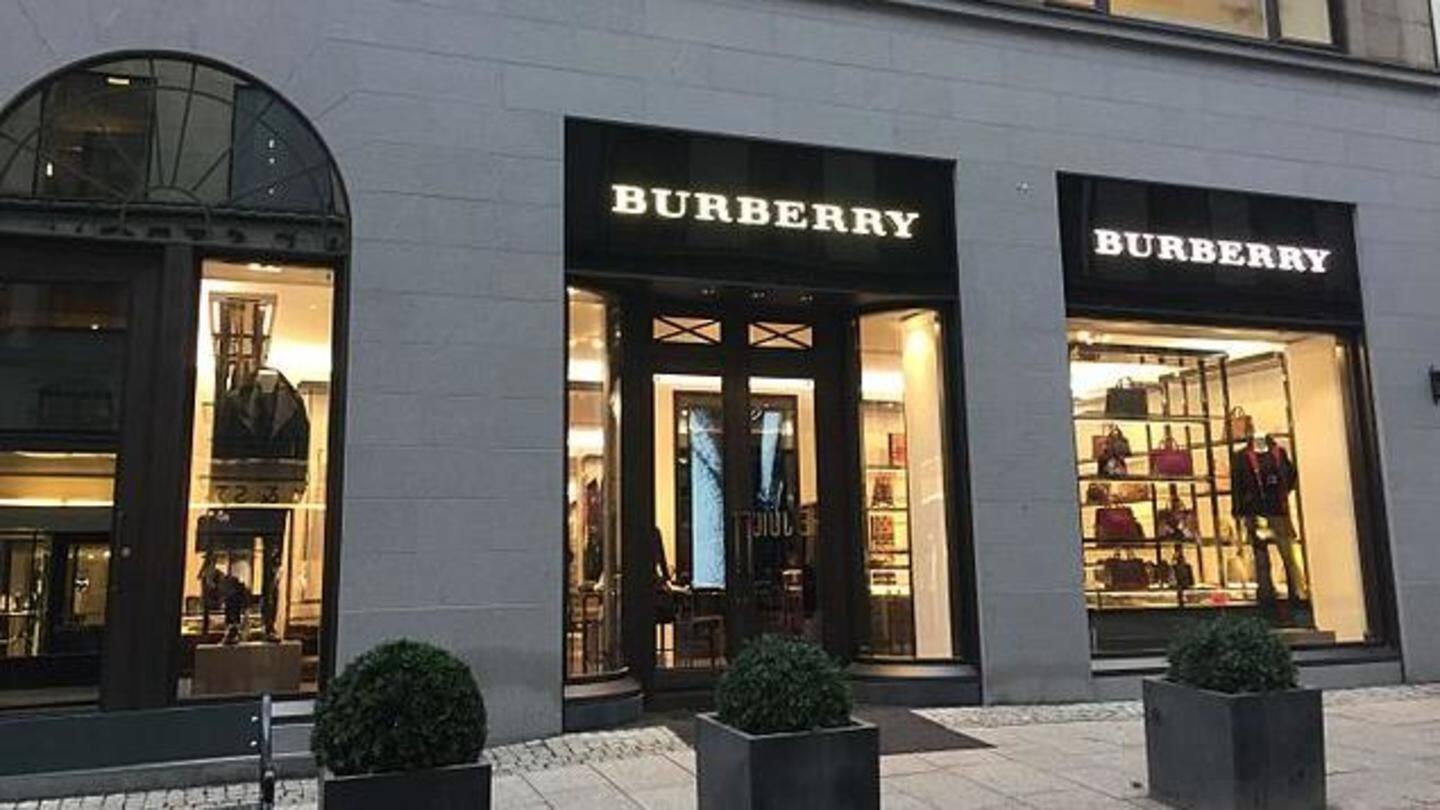
Burberry burnt $37mn worth of unsold merchandise: Here's why
What's the story
High-end luxury fashion brand Burberry reportedly burnt $37mn worth of its unsold merchandise over the past year to ensure that its products didn't fall into the hands of counterfeiters. The move invited sharp criticism from investors, consumers and environmentalists alike over its implications on the environment and waste generation. Burberry, however, maintained that it takes the issue of waste "extremely seriously". But, does it?
Burberry's stance
Burberry claims that energy was harnessed via product destruction
Defending its actions, Burberry said that it only destroyed clothes which carried its trademark, and the destruction of the products was carried out with the help of specialist companies which could harness energy from the destruction. Additionally, Burberry also said that it had recently joined the Ellen MacArthur Foundation's Make Fashion Circular initiative in a bid to reduce waste generation in the high-fashion industry.
Waste created
Burberry has destroyed $117mn worth of products since 2013
Data, however, indicates otherwise. The Times reported that despite Burberry's claims of environmental consciousness, the value of the company's waste had shot up by 50% over the past two years, and by almost six times since 2013. Notably, over the past five years, Burberry has destroyed over $117mn worth of products, prompting many to ask why it doesn't donate excess produce to charity.
Over-production?
Is Burberry's stock build-up a result of exorbitant prices?
The obvious question is that if Burberry is burning millions of dollars worth of merchandise, why over-produce? Analysts are of the opinion that Burberry's stock build-up is largely resultant of its products being unaffordable in Asian and Eastern markets, especially China, where its cheapest rucksack, for example, costs around $1,250. This might explain Burberry's recent decision to cut prices by 4% in China.
Common practice
Burning left-over stock is a common practice in high-fashion
Regardless, what is alarming to note is that burning of left-over of stock is a fairly common practice to retain exclusivity in the high-end luxury fashion industry. Several such designer brands burn their left-over stock to prevent it from being worn by the "wrong people" on "grey markets" at discounted prices. Additionally, it's claimed that the practice protects brands' intellectual property from abuse.
H&M
Unsold H&M stock was used to power a Swedish city
In fact, the practice is so common that last year, 15 tonnes of unsold H&M stock was used to power Vasteras, a small Swedish city, instead of coal. While H&M maintained that it only incinerated unsafe items, activists cried hypocrisy citing the company's earlier advertisement urging consumers to recycle unwanted clothes. Questions about donating to charity were also raised.
Richemont
Swiss watch-maker Richemont destroyed $520mn worth of goods
Another notable example of high levels of wastage in the high-fashion industry comes from Swiss watch-maker Richemont, the company that owns Montblanc and Cartier brands. The company admitted to destroying over $520mn worth of watches over the past two years after buying back unsold stock from jewellers. It's understood that Richemont took the action after unsold stock started building up in Asian markets.
Charity
It seems like very few high-fashion brands consider charity
When The Times approached other brands - including the likes of Vivienne Westwood, Victoria Beckham, and Paul Smith - asking them about what they do with their unsold stock, none replied. Only one, Temperley, said that it donated its unsold stock to charity, to the NGO Women for Women International, or organized discounted sales in Oxfordshire. Observably, charity in high-fashion seems to be lacking.